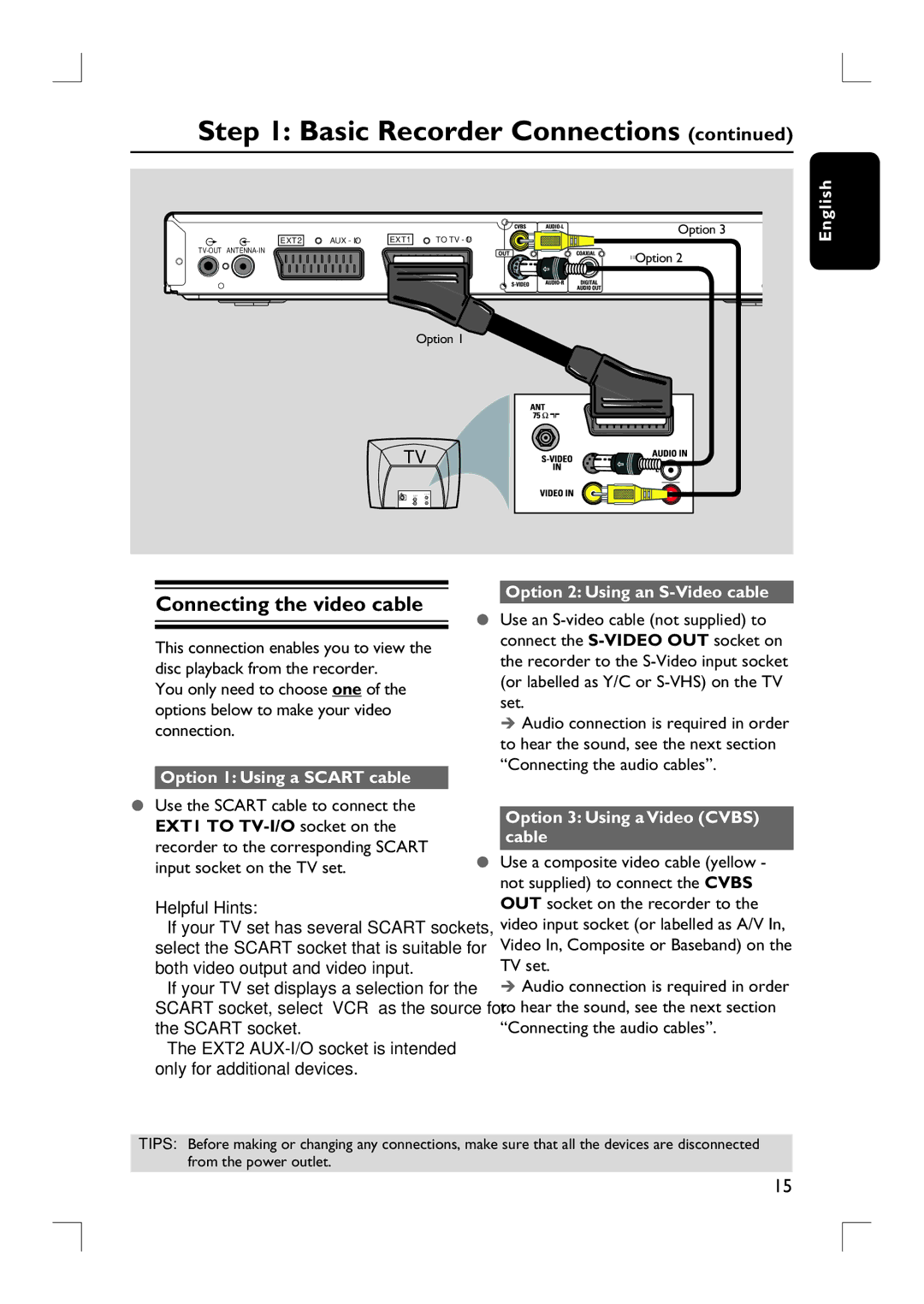
Step 1: Basic Recorder Connections (continued)
|
| EXT1 | Option 3 |
EXT2 | AUX - I/O | TO TV - I/O |
![]()
![]()
![]()
![]() Option 2
Option 2
Option 1
TV
English
Connecting the video cable
This connection enables you to view the disc playback from the recorder.
You only need to choose one of the options below to make your video connection.
Option 1: Using a SCART cable
Use the SCART cable to connect the EXT1 TO
Helpful Hints:
–If your TV set has several SCART sockets, select the SCART socket that is suitable for both video output and video input.
–If your TV set displays a selection for the SCART socket, select ‘VCR’ as the source for the SCART socket.
–The EXT2
Option 2: Using an S-Video cable
Use an
Audio connection is required in order to hear the sound, see the next section “Connecting the audio cables”.
Option 3: Using a Video (CVBS) cable
Use a composite video cable (yellow - not supplied) to connect the CVBS OUT socket on the recorder to the video input socket (or labelled as A/V In, Video In, Composite or Baseband) on the TV set.
Audio connection is required in order to hear the sound, see the next section “Connecting the audio cables”.
TIPS: Before making or changing any connections, make sure that all the devices are disconnected from the power outlet.
15
